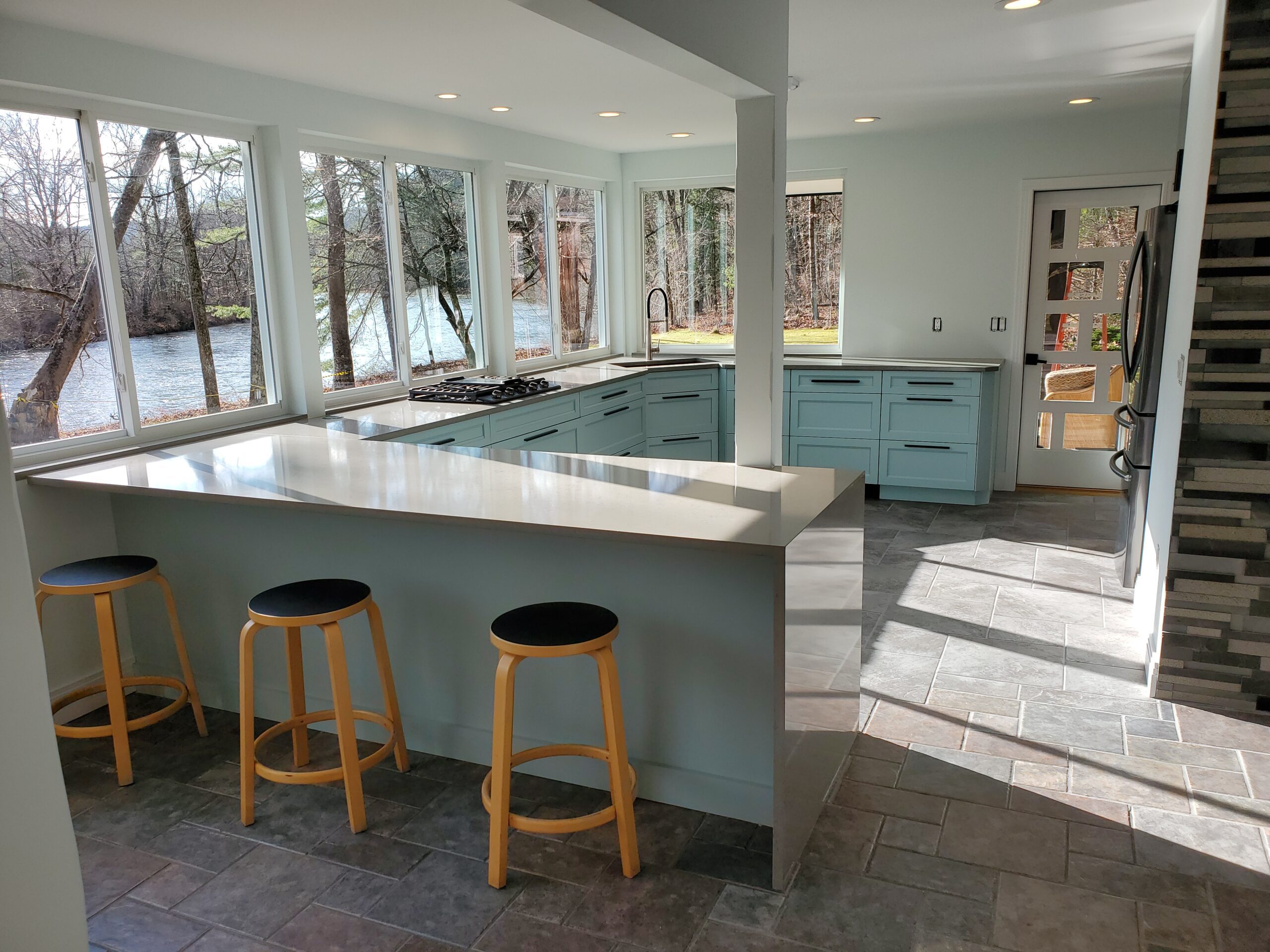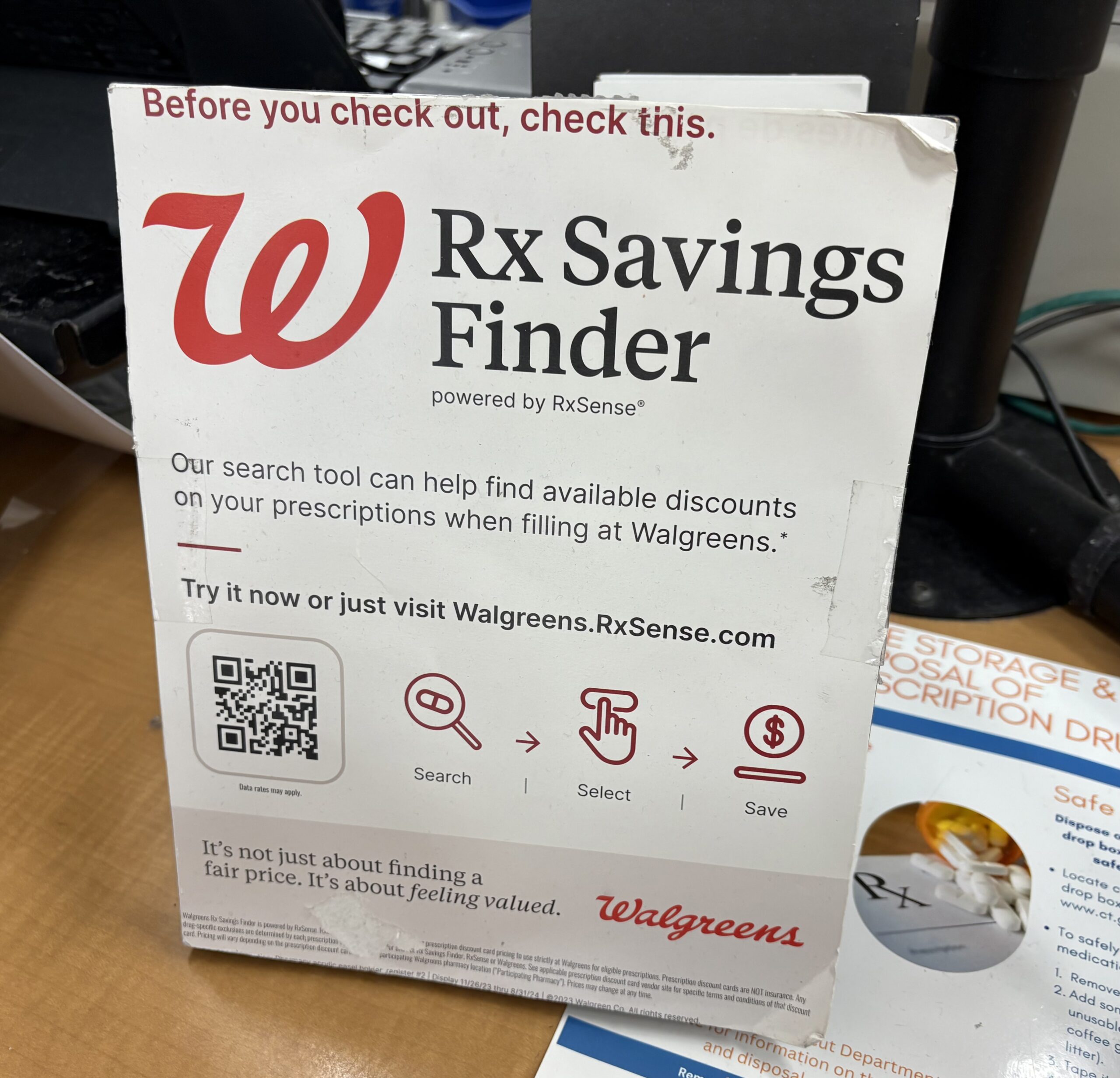Tourist in My Own State: West Hartford’s Sarah Whitman Hooker House

Audio By Carbonatix
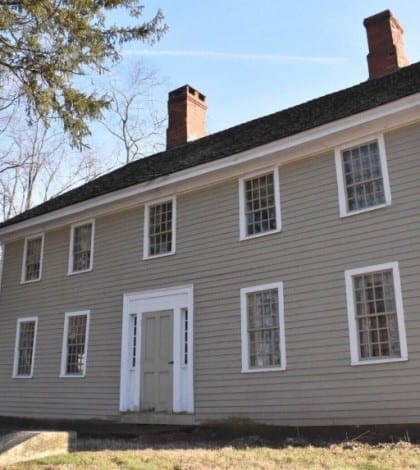
The Sarah Whitman Hooker House in West Hartford. Photo credit: Deb Cohen
Deb Cohen of West Hartford pays a visit to the Sarah Whitman Hooker House.
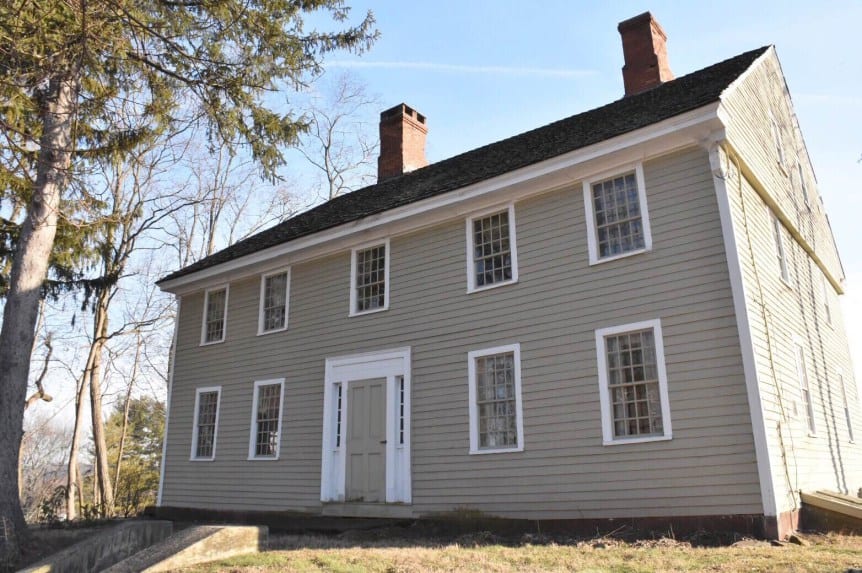
The Sarah Whitman Hooker House in West Hartford. Photo credit: Deb Cohen
By Deb Cohen
As a West Hartford resident of over 20 years, I have another opportunity to expose my lack of knowledge about this town I call home. If you are equally unfamiliar, allow me to introduce the Sarah Whitman Hooker House, one of only a few examples of 18th century architecture in West Hartford.
West Hartford is home to two historic house museums, one being the Noah Webster House and the other being the Sarah Whitman Hooker House. As it currently stands, the Hooker House, located at 1237 New Britain Ave. (at the intersection of South Main Street) is the oldest structure open to the public in West Hartford, dating back as far as 1715.
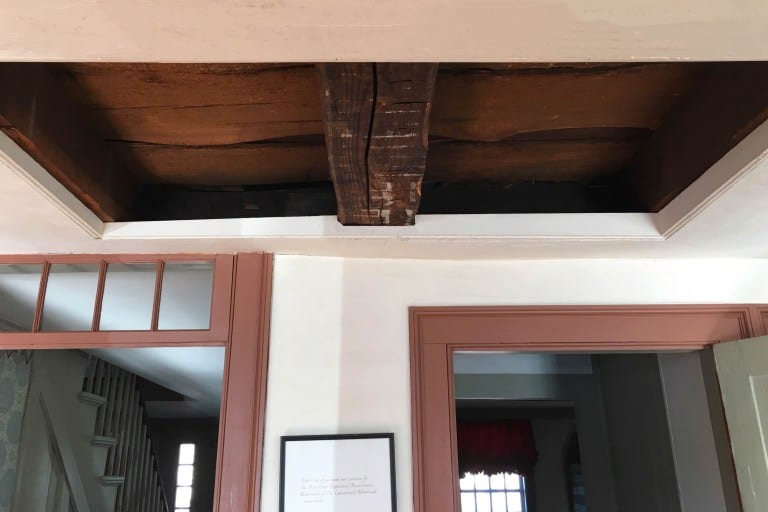
A cutout in the kitchen lets visitors see a portion of the home’s traditional post and beam construction. Photo credit: Deb Cohen
The museum is run by the Sarah Whitman Hooker Foundation, administered by siblings Martha and Karl Fransson, but the home and the hill it perches on was deeded to West Hartford in the 1970s to help ensure it remains a historic resource in the future.
Currently the home is open for tours by appointment. Martha and Karl were generous with their time on our tour, but I quickly realized we would only scratch the surface of what there is to know about the home’s construction, its collections, its preservation and the history of its former occupants.
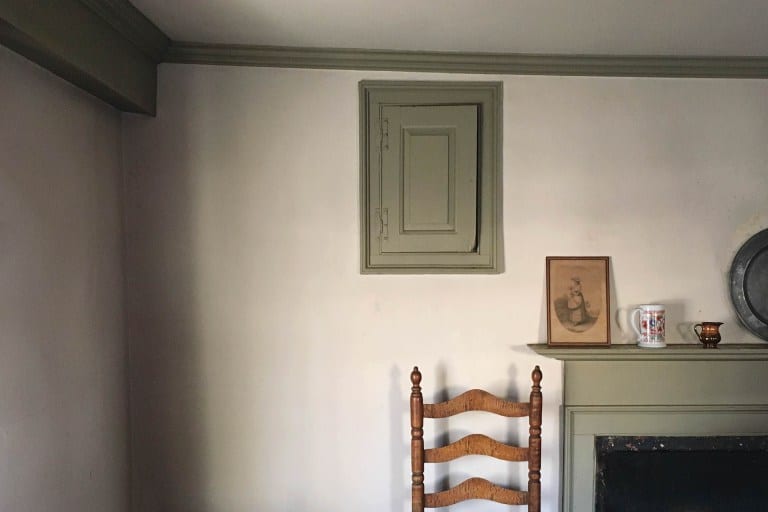
That little door gives a peek-a-boo view into the back of the kitchen fireplace. It’s not original to the home, but an interesting addition. Photo credit: Deb Cohen
The home was on a large farm for much of its past. The first two rooms were constructed by Ensign Timothy Seymour, with two additional rooms added circa 1730 by his son, Captain Timothy Seymour. One of those rooms was used as a tavern which was common at that time as a source of additional income.
Located on a major thoroughfare, travelers would often stop and enter the dedicated side door to the tavern to sample the meal of the day and enjoy a glass of ale, water or other beverage.
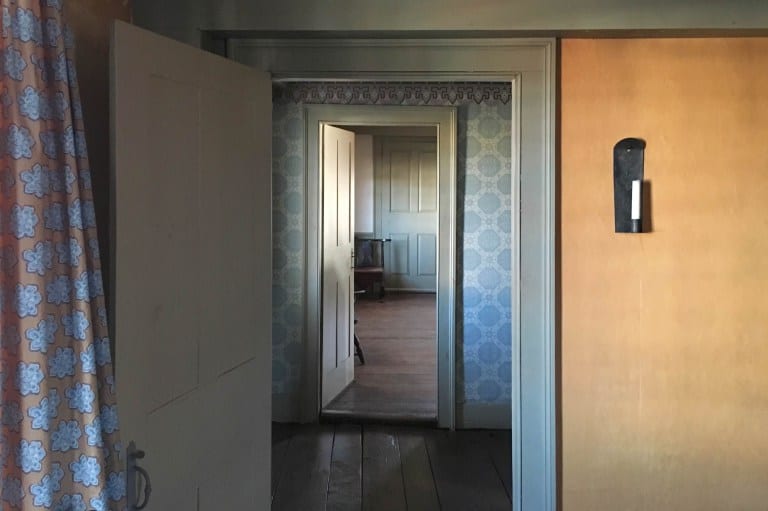
View from one of two original rooms in the house across the central hallway to the tavern room. The closed door is the entrance door to the tavern from outside. Photo credit: Deb Cohen
Though the Seymours were the home’s first occupants and others resided there over the years, the home is named for Sarah Whitman Hooker due to the length of time she lived there as well as the historic events that occurred during that time.
Sarah and her husband Thomas Hart Hooker, a descendent of Rev. Thomas Hooker, the framer of the Connecticut Constitution, moved into the home as newlyweds in 1770 and purchased it in 1773. From 1770-1775, they lived there happily and welcomed two children into the world, Abigail and Thomas, Jr.
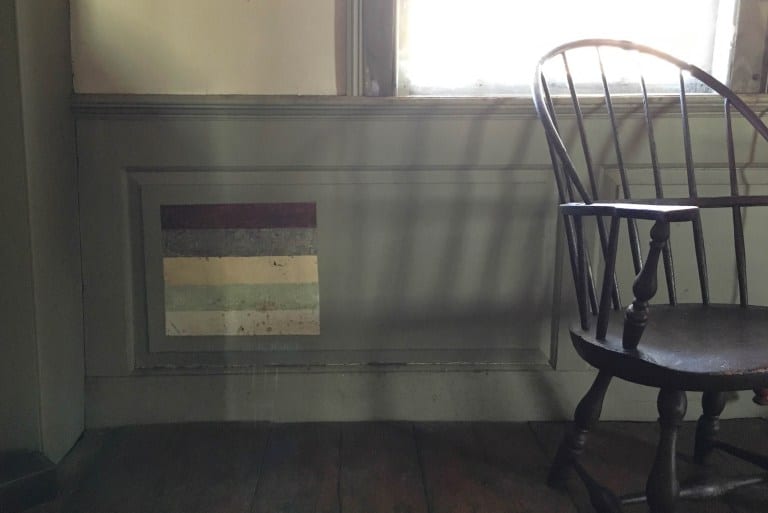
Professional paint analysis revealed multiple layers of wall color. The current color is the second one from the top, although it looks different due to chemical changes to the original color over time. Photo credit: Deb Cohen
One of the most notable events to occur at the home in my estimation had to do with the Hooker’s slave, a man by the name of Bristow. Bristow was given the opportunity to buy his freedom, which he did in April 1775 at a cost of 60 pounds. Thomas signed a Deed of Manumission for Bristow granting him his freedom.
Though it may not seem that Thomas was generous in allowing Bristow this opportunity, this occurred decades before the abolitionist movement and in that sense the Hookers were groundbreaking in their treatment of Bristow.
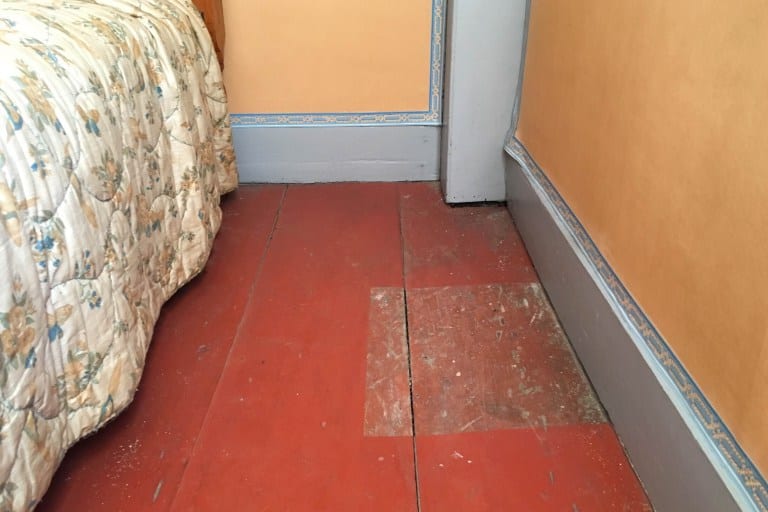
The current red floor color was applied after professional paint analysis revealed the original paint color in the square on the right. The shade looks different due to chemical changes over time. Photo credit: Deb Cohen
Bristow continued to live with the Hooker family after he purchased his freedom to help tend the farm and home. He ultimately became a noted local agriculturist and was an incredible support to Sarah when Thomas passed in late 1775 from pleurisy after leaving West Hartford to defend Boston in the Revolutionary War.
Historians are still working to put together the pieces of Bristow’s story from limited documentation, but West Hartford chose to honor him by naming the town’s newest middle school after him in 2004. He is the only known African American buried in West Hartford’s Old Center Cemetery.
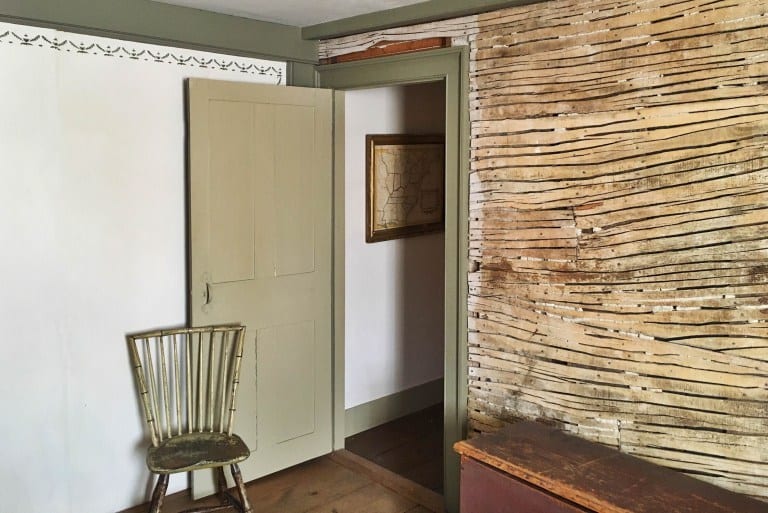
A wall left unfinished could be at home in today’s popular industrial interior style. It is original ‘sawn and cut lathe.’ Photo credit: Deb Cohen
Sarah’s life with a large farm and two small children became even more complicated from 1775-1776 when she was asked to house British soldiers Colonel Phillip Skene and his son Captain Andrew Skene by the General Assembly.
Their accommodations with Sarah were granted as an alternative to jail in exchange for their promise not to try to escape and to return home as soon as practical. Sarah performed her duty of keeping them safe, even convincing an angry mob to abandon their plan to tar and feather them.
Colonel Phillip stayed true to his word and went back to England in the spring of 1776 but Captain Andrew ultimately left the Hooker homestead and re-joined British forces in New York.
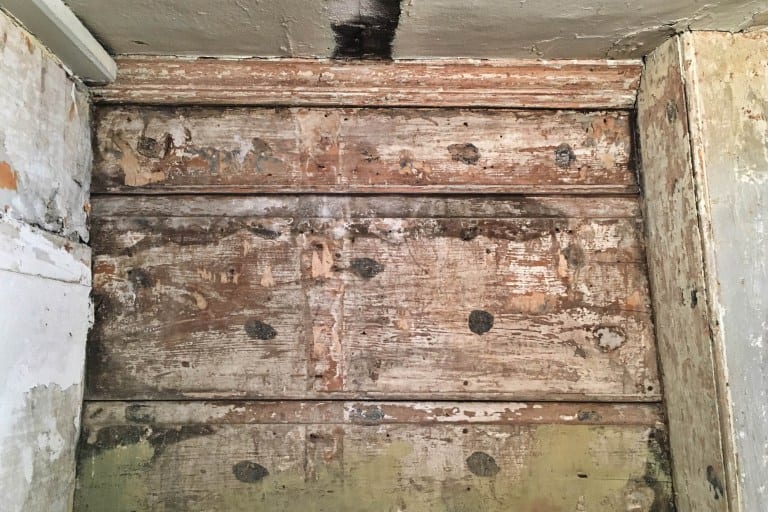
Early example of sponge painting in a small closet in the home, thought to date to the early 18th century. Photo credit: Deb Cohen
Over the years the Sarah Whitman Hooker House has been listed on the National Register of Historic Places and has also been honored as a historic site on the Rochambeau Route. Rochambeau was the French general whose troops joined forces with General Washington’s troops to fight the British.
The French troops arrived in Newport, Rhode Island and numbering over 4,000 marched over 600 miles through Connecticut to New York and ultimately to Virginia where the French and Americans prevailed in the battle of Yorktown, the last major battle of the Revolutionary War.
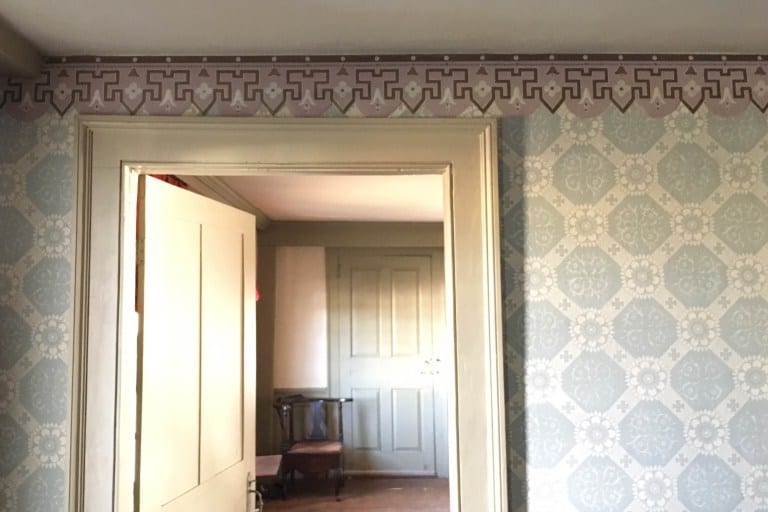
A view from the central hallway of the home into the tavern room. The far door is the tavern door that would have been used by patrons. Photo credit: Deb Cohen
Through the Herculean efforts of the Fransson family and the Sarah Whitman Hooker Foundation, the home has undergone major restoration over the years. Frances M. Fransson, Martha and Karl’s mother, was honored in 2000 by the West Hartford Historical Society for her efforts.
Colonial era homes are inherently simple compared to the architectural styles of later years, but the Hooker House is elegant in its simplicity. Great care has been taken to accurately re-create the paint colors, wall treatments and fabric treatments of the period, and the home contains nothing older than 1830, the year that Sarah Whitman Hooker moved away from West Hartford.
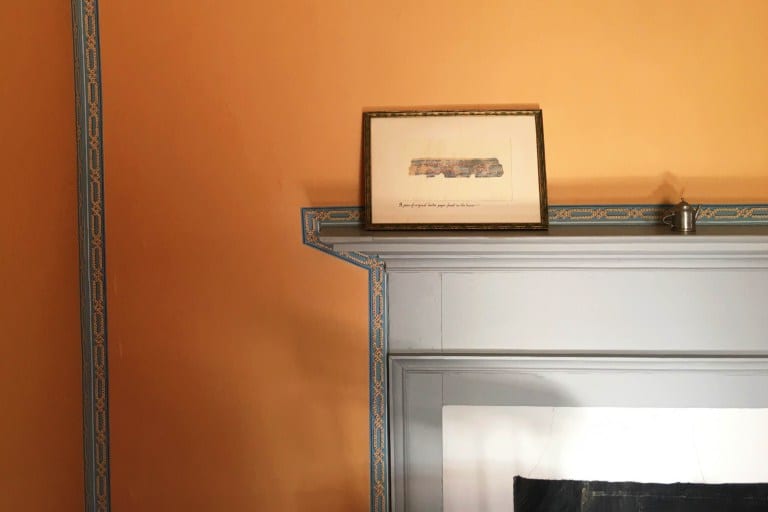
The framed item is a snippet of wallpaper border that was discovered in the home and recreated by Waterhouse Wallcoverings to be used in this room. It borders all of the woodwork and corners of the room. Photo credit: Deb Cohen
There are various cutouts in the ceilings and walls throughout the home to allow visitors to see examples of what lies behind, allowing a glimpse at something typically covered up in most historic house museums.
Similarly, examples of early paint colors are left uncovered so results of professional paint analysis can be easily viewed.
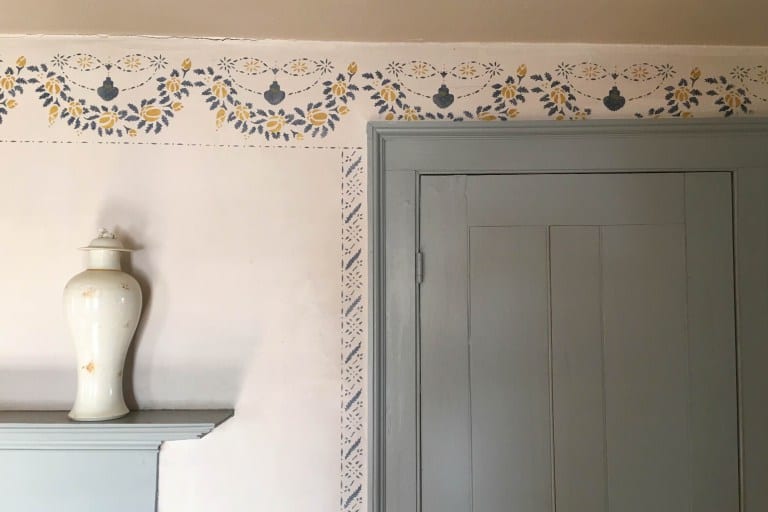
Intricate wall stenciling in the room re-created as the dining room. Photo credit: Deb Cohen
The future of the Sarah Whitman Hooker House is somewhat uncertain. In speaking with the Franssons, they are becoming increasingly concerned about ongoing maintenance and potential water damage at the home.
According to a Hartford Courant article in 2013, an architectural study completed on the house indicated that additional necessary restoration costs would likely be in excess of $200,000 to keep the home viable.
Furthermore, to make it a true community asset, it needs to be more accessible to the public through expanded hours, improved parking and handicapped access.
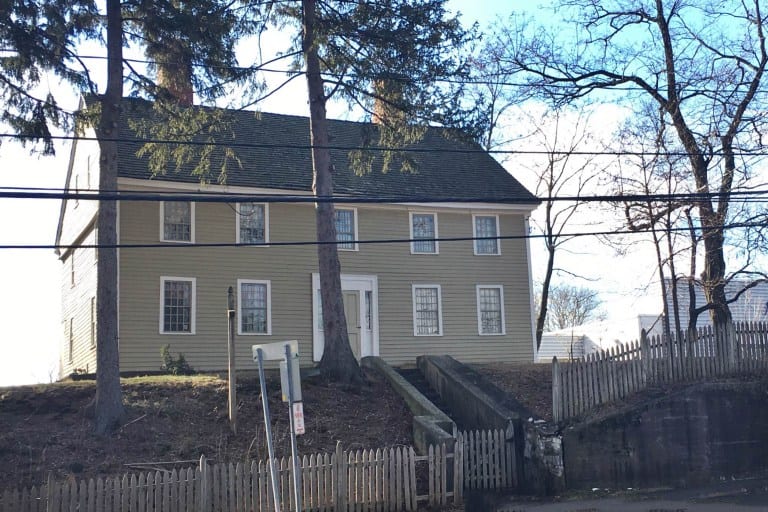
The home looks forlorn in its current spot, on a very busy road surrounded by commercial development. Photo credit: Deb Cohen
The issues facing the Sarah Whitman Hooker House are not uncommon for historic sites. Given all that can be learned from the house, its contents and the history of its former residents, and given that the town of West Hartford has so few examples of its kind, it’s an important issue to be solved by the joint efforts of the Sarah Whitman Hooker Foundation, the town, the West Hartford Historical Society and others.
If you are interested in colonial architecture, Revolutionary War history, historic preservation or period furniture, pottery and other collections, make a point of visiting the Sarah Whitman Hooker House. Martha and Karl will thank you.
Also consider joining them for their annual 18th century tea to celebrate George Washington’s 184th birthday. The tea, which will include various speakers, will take place on Saturday, February 13th from 12-3, and tickets can be purchased by calling 860-523-5887 to make a reservation. See this recent post in the Courant for more details.
Enjoy this post? You might also like Boone Hall Plantation or Noah Webster House.
Deb Cohen of West Hartford started The Front Door Project in the summer of 2014 as a way to motivate herself to get outside, exercise and pay more attention to her surroundings. She began photographing homes with a primary focus on the front door, which is a welcoming focal point. Social media provided the means to share the photographs and a ready audience to follow along, and her new-found interest soon led to exploring other local area towns in my free time. The “project” has led to deeper interests in architecture, local history and historic preservation and came at a time in Deb’s life when she needed some inspiration. Please join Deb as she continues to share her everyday travels and explorations of other towns and places! You can find her other posts at www.thefrontdoorproject.com.
Like what you see here? Click here to subscribe to We-Ha’s newsletter so you’ll always be in the know about what’s happening in West Hartford!


